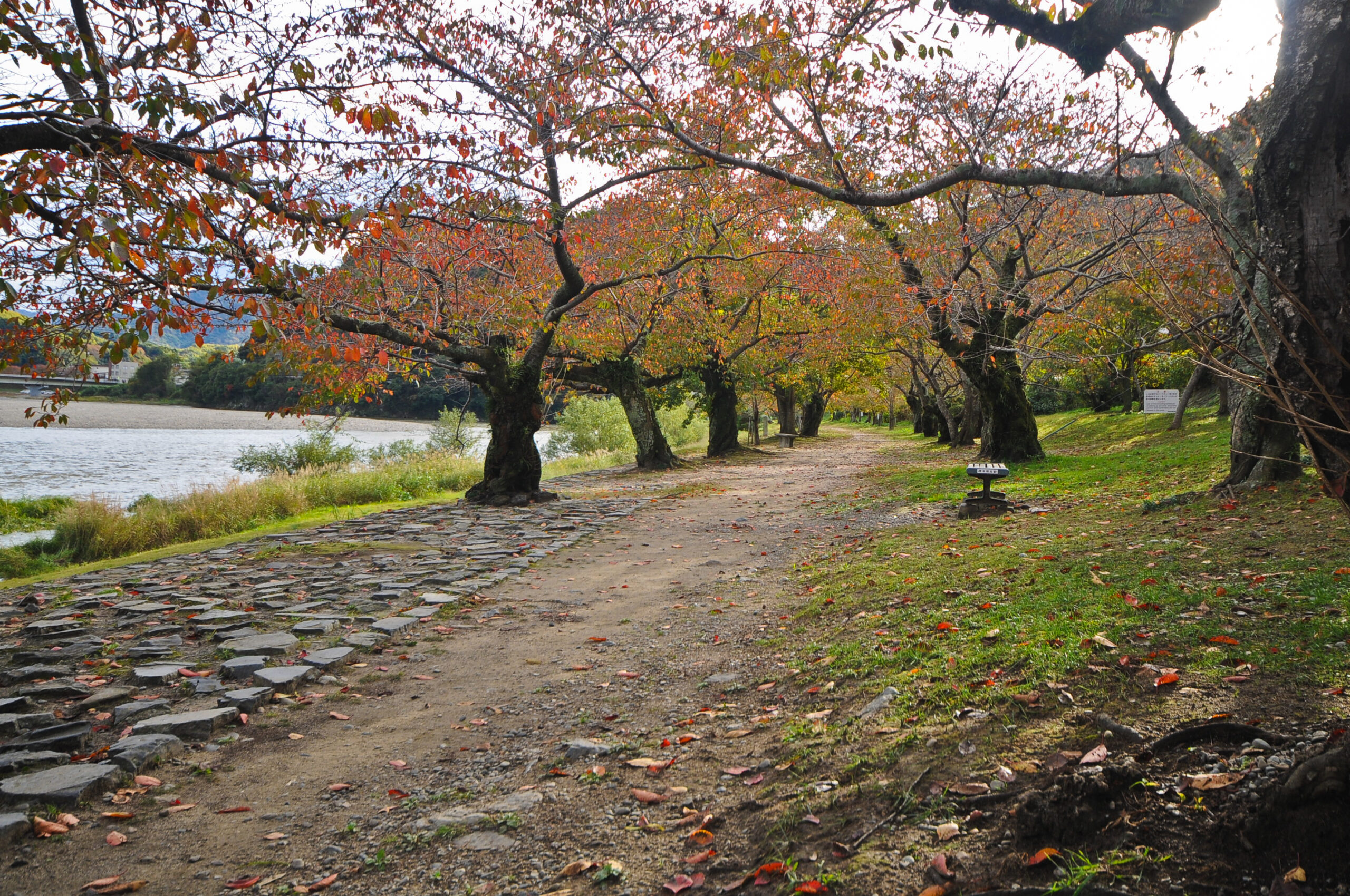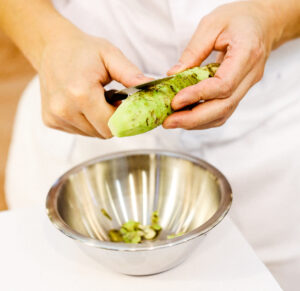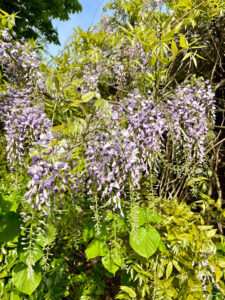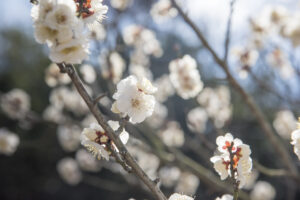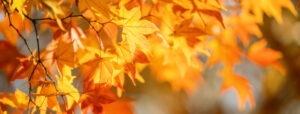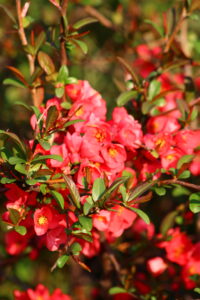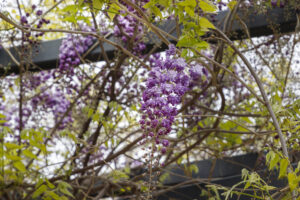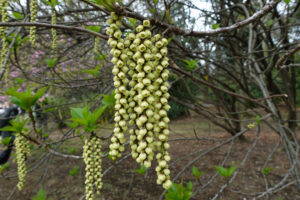As autumn descends upon Japan, the archipelago transforms into a vibrant tapestry of red, orange, and gold. This seasonal spectacle is not only a feast for the eyes but also a profound cultural experience that resonates throughout the nation. From the iconic landscapes kissed by fall foliage to the myriad of festivals and culinary delights that celebrate this time of year, autumn in Japan is a captivating journey that attracts travelers from around the globe. In this article, we will explore the enchanting beauty of Japan’s autumn, delve into its cultural significance, and offer practical tips for experiencing this breathtaking season.
The Beauty of Japan’s Autumn: A Seasonal Overview
Japan’s autumn, known as "aki," is marked by a dramatic change in scenery as the leaves of deciduous trees turn brilliant shades of red, orange, and yellow. This seasonal transformation typically begins in late September and culminates in early December, with the peak foliage season varying by region. The crisp air, clear skies, and stunning landscapes create an atmosphere that feels almost magical, inviting both locals and tourists to bask in nature’s beauty.
As temperatures drop, Japanese gardens, parks, and mountainous regions become popular destinations for "koyo" viewing, a tradition that involves appreciating the changing leaves. Visitors often stroll through gardens such as those in Kyoto, where the vivid colors of maples and ginkgo trees create a picturesque backdrop, while the serene atmosphere invites reflection and tranquility. The contrast of the bright foliage against the deep blue sky and ancient temples or shrines further enhances the experience.
Autumn is also a time of harvest, with rice fields golden with ripened crops and farmers busy gathering their yields. This agricultural bounty is celebrated in various festivals, underscoring the connection between nature and cultural practices. The season symbolizes the passage of time, the beauty of impermanence, and the cycle of life, all of which are deeply embedded in Japanese philosophy.
Moreover, the spirit of autumn extends beyond mere visual appreciation; it is a time for gathering with family and friends, sharing meals, and partaking in numerous cultural activities. The atmosphere of community and gratitude makes autumn a uniquely special time in Japan, rich with opportunities for connection and reflection.
Japan’s autumn is not just a visual feast; it is a season that engages the senses. The crispness of the air, the scent of fallen leaves, and the sounds of rustling foliage create an immersive experience. As the days grow shorter, the soft glow of lanterns and the warmth of seasonal festivals add to the enchanting ambiance.
In summary, Japan’s autumn offers a profound seasonal overview that captivates the heart and mind. It is a time where nature and culture intertwine, inviting everyone to embrace the beauty of transience.
Iconic Landscapes Transformed by Fall Foliage
Japan’s diverse geography offers a multitude of landscapes that become even more breathtaking during autumn. The country’s mountainous regions, such as the Japanese Alps and Hakone, provide stunning vistas where vibrant foliage contrasts against rugged peaks. Mount Fuji, clad in autumn hues, serves as a picturesque backdrop that draws photographers and nature lovers alike.
In addition to mountains, Japan’s coastal areas also showcase beautiful autumn landscapes. The shores of Kamakura and the beaches of Okinawa may not showcase the typical fall foliage, but they provide a unique perspective on the season. Here, the scenery shifts to soft sunsets over the ocean, combined with the changing colors of coastal vegetation.
Urban landscapes, too, are transformed in autumn. Cities like Tokyo and Kyoto are adorned with ginkgo trees lining the streets, their golden leaves falling like confetti during the season. Parks such as Shinjuku Gyoen and Maruyama Park become popular spots for picnicking and enjoying the vibrant display of nature amid the bustling urban environment.
Cultural landmarks also take on a new character during the fall months. Temples and shrines, often surrounded by gardens, become focal points for koyo viewing. The juxtaposition of ancient architecture with the brilliant colors of autumn foliage creates a serene and contemplative atmosphere, inviting visitors to reflect on the passage of time.
Not to be overlooked, rural landscapes in regions such as Hokkaido, Tohoku, and Shikoku present an idyllic setting for autumn exploration. The rolling hills and expansive fields become patches of color, offering a different pace and perspective on the beauty of fall.
Overall, Japan’s iconic landscapes are not just visually stunning during autumn; they evoke a sense of nostalgia and connection to nature that resonates deeply with visitors, making each location a perfect testament to the season’s enchanting allure.
The Science Behind Japan’s Stunning Autumn Colors
The vibrant hues of autumn in Japan are the result of a complex interplay of environmental factors and biological processes. As daylight hours shorten and temperatures drop, trees begin to prepare for the winter months. This preparation involves the breakdown of chlorophyll, the green pigment responsible for photosynthesis, which reveals the other pigments present in the leaves.
Carotenoids, pigments that produce yellow and orange colors, are present in leaves all year round but become visible only when chlorophyll fades. In contrast, anthocyanins, which create red and purple hues, are produced in response to sunlight and cooler temperatures. This is why certain tree species, such as maples, display intense red colors as autumn approaches.
Weather conditions also play a significant role in determining the vibrancy of autumn colors. For instance, warm, sunny days followed by cool nights enhance the production of anthocyanins, leading to more brilliant reds and purples. Conversely, a season with excessive rain or winds may result in a duller display, as these conditions can negatively affect the pigments in the leaves.
The geographical diversity of Japan contributes to a wide range of color displays. Different regions exhibit unique combinations of tree species, each with varying responses to environmental conditions. For example, the vibrant hues of Kyoto’s momiji (maple leaves) contrast sharply with the golden hues of ginkgo trees found in Tokyo.
Furthermore, the timing of autumn color changes can vary significantly across the country, influenced by altitude and latitude. Areas further north, such as Hokkaido, experience earlier color changes compared to southern regions like Kyushu. This sequential transformation allows for an extended season of vibrant foliage throughout the fall months.
In summary, the stunning autumn colors of Japan are a natural phenomenon shaped by biological processes, environmental conditions, and geographical diversity. Understanding the science behind these colors adds depth to the experience of witnessing this seasonal spectacle.
Top Destinations to Experience Japan’s Fall Splendor
When it comes to experiencing Japan’s autumn splendor, certain destinations stand out as must-visit locations for travelers. Kyoto, often regarded as the cultural heart of Japan, is renowned for its temples and gardens that come alive with fall colors. The Arashiyama Bamboo Grove and the gardens of Kiyomizu-dera offer breathtaking views and serene pathways lined with colorful foliage.
Nara, home to Japan’s first capital, is another incredible destination for autumn viewing. Nara Park, known for its free-roaming deer, becomes a picturesque canvas of fall colors as the park’s trees shed their leaves. The contrast of colorful trees against historic landmarks like Todai-ji Temple further enhances the experience.
For those seeking mountainous landscapes, the Japanese Alps provide stunning vistas that are especially captivating in autumn. The Kamikochi area, accessible by bus, allows for breathtaking hikes amidst vibrant foliage, with the backdrop of snow-capped peaks creating an unforgettable experience.
The picturesque city of Takayama, famous for its preserved Edo-period streets, offers a unique atmosphere during autumn. The Hida region boasts traditional wooden houses surrounded by stunning fall colors, making it a perfect destination for leisurely strolls and cultural immersion.
In the northern regions, Hokkaido is celebrated for its dramatic autumn landscapes. The Daisetsuzan National Park showcases diverse foliage against a backdrop of rugged mountains, while the Shiretoko Peninsula offers breathtaking coastal views that capture the essence of fall.
Finally, no autumn journey would be complete without a visit to Nikko, a UNESCO World Heritage site known for its ornate shrines and temples. The vibrant colors of the surrounding forests, particularly at Lake Chuzenji and Kegon Falls, create a surreal atmosphere that enchants all who visit.
Whether travelers seek cultural experiences, natural beauty, or a combination of both, these top destinations provide the perfect backdrop for experiencing the magnificent fall colors of Japan.
Cultural Festivals Celebrating the Autumn Season
Autumn in Japan is not only about the changing leaves; it is also a time of celebration marked by a variety of cultural festivals. One of the most famous is the Jidai Matsuri, or Festival of Ages, held annually in Kyoto on October 22nd. This historical festival features a grand parade where participants don intricate costumes representing different periods of Japanese history, showcasing the rich cultural heritage of the city against the stunning backdrop of autumn foliage.
The Takayama Autumn Festival, held in the picturesque town of Takayama, is another highlight of the season. Celebrated in mid-October, this festival features elaborately decorated floats that are paraded through the streets, along with traditional music and dances. The festival’s vibrant atmosphere is accentuated by the surrounding autumn colors, creating a truly enchanting experience for attendees.
In Hiroshima, the Momiji Matsuri, or Maple Festival, takes place in early November. This festival celebrates the beauty of autumn leaves through various events, including music performances, food stalls, and traditional crafts. The festival’s connection to nature fosters a sense of community, and visitors can immerse themselves in local culture while enjoying the vibrant autumn scenery.
The Okaigan Matsuri in Takamatsu and the Kasuga Taisha Shrine’s famous lantern festival in Nara are other notable celebrations. These events frequently feature food stalls offering seasonal treats, showcasing local cuisine while illuminating the beauty of the autumn landscape through lantern-lit paths.
Additionally, the Shichi-Go-San festival held in November honors children’s growth and health. Families dress their children in traditional attire and visit shrines to offer prayers, aligning with the themes of gratitude and reflection central to the autumn season. The vibrant colors of the children’s kimono against the backdrop of autumn leaves create a beautiful sight.
In conclusion, Japan’s autumn festivals beautifully encapsulate the spirit of the season. They provide opportunities for cultural immersion while celebrating the stunning transformation of nature, creating unforgettable experiences for both locals and visitors alike.
A Culinary Journey: Autumn Delights in Japan
As the leaves change color, so does Japan’s culinary landscape, offering a bounty of seasonal delicacies that reflect the flavors of autumn. This is the time of year for harvest festivals, where freshly picked ingredients take center stage. One of the most celebrated autumn foods is "kuri," or chestnuts, which are often used in traditional dishes and desserts, adding a nutty sweetness to seasonal offerings.
Matsutake mushrooms, prized for their unique flavor and aroma, are another autumn highlight. These rare mushrooms are often featured in hot pots or grilled dishes, providing a taste of the season that is both luxurious and comforting. The short harvesting period for matsutake mushrooms makes them a sought-after delicacy during the fall months.
Rice, a staple of the Japanese diet, also plays a significant role in autumn cuisine. The "shinmai," or new rice, harvested in autumn is celebrated for its freshness and sweetness. Many restaurants and homes prepare "sushi" or "donburi" using shinmai, allowing diners to experience the pure taste of the season.
Pumpkins, particularly "kabocha," are commonly used in soups, desserts, and tempura during autumn. Their rich, sweet flavor pairs wonderfully with traditional Japanese seasonings, creating comforting dishes that warm the soul. Seasonal sweets, such as "mont blanc" and "dango," often incorporate flavors like chestnut and sweet potato, showcasing the essence of autumn in every bite.
In addition to these ingredients, many regional specialties flourish during autumn. For instance, the Sanma fish, or Pacific saury, is a popular autumn dish in northern Japan, often grilled and served with freshly grated daikon radish. The seasonal catch embodies the flavors of autumn and is a beloved treat among locals.
As the season progresses, various sake breweries also begin to release their new batches of sake, made from the freshly harvested rice. These seasonal brews often feature unique flavors that reflect the terroir of the region, inviting enthusiasts to explore and enjoy the diverse offerings.
In summary, Japan’s autumn cuisine is a delightful journey through the flavors of the season. It invites everyone to savor the bounty of nature while celebrating the cultural significance of food as an expression of gratitude and connection to the land.
Traditional Art Forms Inspired by Autumn’s Beauty
The breathtaking beauty of autumn in Japan has inspired various traditional art forms throughout history. Perhaps one of the most notable is "ukiyo-e," a genre of woodblock printing that flourished during the Edo period. Artists like Katsushika Hokusai and Utagawa Hiroshige captured the essence of seasonal landscapes, including striking depictions of autumn foliage, mountains, and serene temples, reflecting the transience of nature.
Calligraphy, another revered art form in Japan, often draws inspiration from the changing seasons. Autumn-themed works frequently incorporate poetic verses that evoke the feelings associated with fall, such as nostalgia and reflection. The use of warm autumn colors in ink and brushwork captures the spirit of the season, allowing artists to express their emotional connection to nature.
The art of ikebana, or flower arrangement, also embraces the beauty of autumn. Practitioners use seasonal blooms, branches, and foliage to create arrangements that reflect the changing landscape. The inclusion of materials like maple leaves or chrysanthemums symbolizes the fleeting nature of life, embodying the philosophical themes prevalent in Japanese aesthetics.
In addition to visual arts, traditional music and dance also celebrate autumn. The "Noh" and "Kabuki" theatrical forms often feature autumn-themed performances, with costumes and stage designs inspired by seasonal colors and motifs. These performances, rich in symbolism and storytelling, create an immersive cultural experience that deepens the appreciation of the autumn season.
Furthermore, poetry has historically played a significant role in capturing the essence of autumn in Japan. Forms such as haiku and tanka often focus on the beauty of falling leaves, the sounds of nature, and the emotions evoked by the season. These traditional poems encapsulate the fleeting moments of beauty, inviting readers to reflect on their own experiences with nature.
In summary, the artistic expressions inspired by Japan’s autumn beauty are diverse and deeply rooted in cultural traditions. These art forms not only celebrate the visual splendor of the season but also convey profound philosophical reflections on nature, transience, and the human experience.
Photography Tips for Capturing Japan’s Fall Colors
For photography enthusiasts, autumn in Japan presents an unparalleled opportunity to capture nature’s vibrant palette. To make the most of this seasonal spectacle, there are several tips to consider when photographing the stunning fall colors.
First and foremost, timing is crucial. Each region experiences peak foliage at different times, so it’s essential to research the specific areas you plan to visit. Websites and local tourism offices often provide updates on foliage conditions, helping photographers identify the best times to capture the vibrant colors.
Lighting plays a significant role in photography, particularly during autumn. Early morning and late afternoon, known as the "golden hour," provide soft, diffused light that enhances the colors of the leaves. During these times, shadows are gentle, allowing the vibrancy of autumn hues to shine through without harsh contrasts.
Composition is another critical aspect of photography. Utilizing leading lines, such as pathways or rivers, can draw viewers into the scene. Experimenting with angles and perspectives can create unique and engaging images. Including elements like traditional Japanese architecture or people enjoying the scenery can also add depth and context to your photographs.
In addition, using a polarizing filter can help enhance colors and reduce glare when photographing fall foliage. This filter can make the blues of the sky pop and increase the saturation of reds and yellows in the leaves, resulting in more dynamic images.
When capturing landscapes, consider incorporating foreground elements to create a sense of depth. This could include fallen leaves, rocks, or water reflections that lead the eye into the frame. Taking advantage of the diverse landscapes in Japan, from mountains to urban areas, will result in varied and captivating images.
Lastly, patience is key. It may take time to find the perfect shot, especially in popular locations where crowds gather. Embrace the experience, take your time to explore, and allow the natural beauty of autumn in Japan to inspire your photography.
In conclusion, capturing Japan’s fall colors is an exhilarating endeavor that requires a blend of timing, technique, and creativity. By following these tips, photographers can create stunning visual narratives that reflect the enchanting beauty of this seasonal spectacle.
Outdoor Activities to Enjoy During Autumn in Japan
As the autumn leaves begin to paint the landscapes of Japan, a variety of outdoor activities beckon adventurers and nature lovers alike. The mild temperatures and crisp air create an ideal setting for exploring the great outdoors, allowing visitors to immerse themselves in the season’s beauty.
One of the most popular activities during autumn is hiking. Japan boasts numerous trails that offer breathtaking views of colorful foliage. The Nakasendo Trail, a historic route connecting Kyoto and Tokyo, provides hikers with the chance to experience traditional post towns and scenic landscapes adorned in fall colors.
For those seeking a more leisurely experience, picnicking in parks and gardens is a delightful way to enjoy the scenery. Many parks, such as Shinjuku Gyoen in Tokyo or Maruyama Park in Kyoto, have designated picnic areas where families and friends gather to appreciate the beauty of autumn while sharing seasonal treats.
Cycling is another fantastic way to experience Japan’s fall splendor. Cities like Kyoto and Osaka offer bike rentals, allowing visitors to explore at their own pace. Riding through tree-lined streets and along rivers, cyclists can take in the vibrant foliage and peaceful scenery, immersing themselves in the season’s charm.
For a unique perspective on fall colors, consider taking a scenic boat ride. Areas like Lake Kawaguchi near Mount Fuji offer stunning views of autumn foliage reflecting on the water’s surface. This tranquil experience allows visitors to appreciate the beauty of nature from a different vantage point.
Participating in cultural activities outdoors, such as tea ceremonies in gardens or visiting seasonal festivals, further enhances the autumn experience. These activities provide an opportunity to connect with Japan’s rich cultural heritage while enjoying the beauty of the season.
In summary, Japan’s autumn offers a plethora of outdoor activities that allow visitors to engage with nature and immerse themselves in the season’s enchanting atmosphere. From hiking and cycling to leisurely picnics and scenic boat rides, the opportunities for exploration are as varied as the vibrant colors of fall.
The Spiritual Significance of Autumn in Japanese Culture
Autumn in Japan is not only a time of visual beauty and cultural celebration; it also holds significant spiritual meaning deeply rooted in the country’s history and traditions. The changing of the seasons is viewed as a reminder of the impermanence of life, encapsulated in the concept of "mono no aware," which translates to "the pathos of things." This philosophy encourages a deep appreciation for the fleeting beauty found in nature, particularly during the autumn months.
The season is often associated with harvest and gratitude, reflecting the agrarian roots of Japanese culture. Festivals held during autumn celebrate the bountiful harvest, and rituals are performed to express appreciation for the earth’s gifts. Shinto shrines and Buddhist temples often host ceremonies to honor the spirits of ancestors, acknowledging the cyclical nature of life and death.
In addition, autumn is a time for reflection and introspection, as the year begins to draw to a close. Many people engage in practices such as writing poetry or taking walks in nature to contemplate their experiences and express gratitude for the year’s blessings. The quiet beauty of the season lends itself to moments of contemplation and spiritual renewal.
Furthermore, the rich autumn colors serve as a reminder of the ever-changing nature of life. The transformation of leaves from vibrant green to warm hues symbolizes growth, change, and the passage of time. This natural cycle resonates with many
